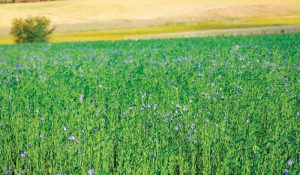
(Image courtesy of John Morgan, StereoEye Productions)
A USDA grant is helping the PA Flax Project revitalize the flax-to-fiber industry in Pennsylvania.
By Kathleen Webber
Textile artist Heidi Barr’s search for a local supplier of linen in Pennsylvania for her home goods company left her empty-handed and curious. Through her research, she found that linen was no longer produced in North America. The flax seed had first come to the United States in the 1600s with the Dutch and German settlers of Germantown, an area of Philadelphia just minutes from where she lived. Barr wondered what it would take to start the industry up again in the United States. She found others interested in growing flax for fiber and came across the Cleveland-based Rustbelt Fibershed linen project and Fibrevolution Inc. in Fruitland, Ore. But it was a chance meeting with a Pennsylvania farmer, Emma De Long, who wanted Barr to make her a linen wedding dress, that led De Long to hand plant a test plot of flax in March 2020 on her vegetable and flower farm — Kneehigh Farm — in Pottstown, Pa. The two women formed the PA Flax Project (PAFP) that year to build a field-to-fiber supply chain in South-eastern Pennsylvania hiring the women at Fibrevolution as consultants to share knowledge about flax, its agronomy, and the processing to make it into linen.
Not long after, in September 2022, the North American Linen Association (NALA) was established, and Barr became the founding vice president on the board. A 501c6 trade association, NALA focuses on advancing the flax-to-linen industry in North America. Shannon Welsh, executive director of NALA and co-founder of Fibrevolution, helped assemble a network of national and international experts to provide members with training, education, technical advice, and networking to rebuild the industry in North America.
Recently, PAFP was awarded a$1.7 million U.S. Department of Agriculture (USDA) Agricultural Marketing Services Organic Marketing Development Grant (OMDG) to grow flax for linen and other co-products on 12,000 acres in Pennsylvania. PAFP has partnered with the Rodale Institute, Kutztown, Pa., on the grant to reach its large network of organic and transitioning to organic farmers. A cohort of farmers is already interested in a work cooperative of producers both at the farm and the mill level. “It is a European model,” Barr said. “We chose the cooperative model not only because we believe in a democratically run workplace, but because it spreads out the risk as well as the reward across all of the stakeholders. And we’re hoping that will make us be able to succeed as a business.”
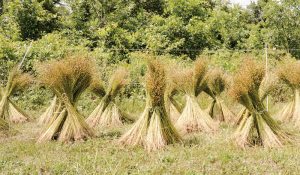
The goal of the OMDG grant is to recruit farmers, support them with education, and move the organic fiber flax from farm to market by developing a mill and a market for Pennsylvania organic fiber flax. PAFP is learning from growers in Europe on how to grow, harvest and process flax. Private funding allowed Barr to purchase three pieces of Depoortere harvesting equipment from Belgium that will arrive this summer in time for its second farmer educational event. “The people we’re purchasing from are also sending somebody to teach us how to use the machinery,” Barr noted. “They’re very supportive of this project and I think a huge key to the North American success in linen is going to be collaboration with people in Europe. They hold all the recent history.”
Welsh traveled through Europe all over the flax-growing regions and toured mills and met other people in the industry for NALA. “Over time, everyone was starting to come to us for consulting for all kinds of things, partnerships,” Welsh said. “Heidi was one of the people that we consulted with. And we saw lots of other regions throughout North America trying to bring this crop back. It seems like to really get a supply chain for linen again, we needed to come together as a larger organization and work together as we build rebuild infrastructure and get crops growing.” NALA’s board is nine members strong and growing. Among the significant growers in North America are Rustbelt Fibershed; Fibrevolution; Chico Flax, Chico, Calif.; GreenMountain Linen, South Royalton, Vt.; TapRoot Fibrelab, Greenwich, Nova Scotia; Montreal-based Canflax; and Biolin Research Inc., Saskatoon, Saskatchewan.
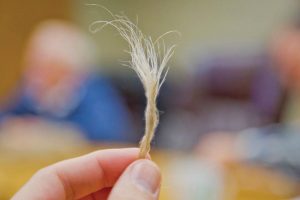
(Image courtesy of Fibrevolution)
After securing the grant, PAFP went from no resources to being fully funded for three years, Barr said. It has hired a new director of Agriculture, a director of Development, a director of Education and a director of Value Chain Coordination. PAFP is working with partners like Pennsylvania Fibershed, a nonprofit organization working to connect the fiber and textile communities in Pennsylvania through industry development. Leslie Davidson, co-founder of Pennsylvania Fibershed said it is assisting PAFP on systems development, data collection and supply chain outreach to get farmers interested in growing the crop and getting people committed to using the fiber once it is grown and processed. Barr said flax has the potential to provide new revenue streams for hundreds of farmers in Pennsylvania alone.
State Support For Flax Growing
Barr worked with Michael Roth, director of Conservation and Innovation at the Pennsylvania Department of Agriculture, to advocate for adding flax fiber to the specialty crop list in the state. “Pennsylvania is the first state to have its own Farm Bill and therefore the only one with a state-level specialty crop program,” Roth noted. Flax is now classified as a specialty crop, which unlocks funding for people who are producing the crop. “Specialty crops are crops that are of particular interest and eligible for support because they have some benefit beyond just being a crop,” Roth said.
Barr also noted that: “Flax was awarded the specialty crop status just ahead of the Commonwealth of Pennsylvania Specialty Crop Block grants coming open to anyone growing fiber flax.”
Shannon Powers of the PA Department of Agriculture said the Pennsylvania Specialty Crop Block Grant was created as part of the PA Farm Bill and the USDA Specialty Crop Block Grant program prioritizing crops tied to fast-growing sectors, or those that have the potential to increase our sustainability and create opportunities for farmers.
“Flax checks both of those boxes, Powers said. “Linen is among the natural fibers in demand by consumers who want to decrease their carbon footprint with plant-based products. At this point, flax has to be shipped out of the U.S. for final processing into linen, then be imported back to the U.S. PA Flax Project is working to return the flax-processing industry back to the U.S. to create economic opportunity for Pennsylvania farmers, and increase sustainability in the textile industry — an effort the PA Department of Agriculture supports.”
Barr said the hope is that other states will look at what Pennsylvania did and go to their Department of Agriculture and advocate for the same. “The more states that can get it on the specialty crop list, the more likely it will be to be added at the federal level,” Barr said.
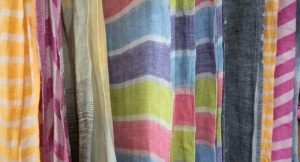
Flax History
Flax is a bast fiber meaning that it comes from second layer of the plant’s stem. Hemp, jute and ramie also are bast fibers. There is evidence of its growth and use dating back to the fifth millennium BC in both Mesopotamia and Egypt, but the crop came to Europe in the Middle Ages, where it was cultivated widely. German settlers brought flax production to the Pennsylvania colony in the 17th century, settling in the southeastern area of the state near Philadelphia. “While it had deep roots in this region, the flax industry initially lost ground to cot-ton in the first Industrial Revolution because cotton had the advantages of the labor of enslaved people,” Barr said. “The cotton gin was an early industrial invention that meant it became faster and cheaper to produce cotton. And so linen sort of lost ground there and then it lost ground again after the Second World War, when synthetic textiles came onto the market. NAFTA was the final nail in the coffin.”
Benefits Of Flax
A climate-positive plant, flax is easy to grow, taking 100 days from seed to harvest. Its most valuable use is for linen production. Linen is known for its durability, breathability and strength, and demand for it has grown as consumers turn away from synthetics and embrace natural fibers. “Flax is environmentally very friendly,” Barr said. “It is a low-input crop that doesn’t require irrigation and it remediates soils, promoting biodiversity. It’s a carbon capture crop. It can be processed from field to spinnable fiber with no chemicals using all mechanical processing. So, every part of the plant has commercial uses. Plus, it yields a very versatile textile.”
Flax grows in a large variety of climates. It will tolerate a lot of different soil types, but more importantly, it’s the humidity and moisture that it needs Barr explained. In Europe, it grows in coastal regions. And in Oregon, growers benefit from a coastal climate. “Here [in PA] we have enough humidity,” Barr noted.
When the fibrous stems of the flax plant turn a yellow-brown color, it is pulled to harvest and the flax plant is left to rett in the field for a period of two to three weeks. The retted flax straw is transported to the scutching mill to be processed into spinnable fiber. Then the fiber goes to a spinning mill and then on to be woven or knit into fabric.
Three Stages Of The PAFP
Right now, PAFP is in the agricultural stage, or stage one, with interested farmers. It is followed by the mill stage, and then the mill’s stabilization stage. This year its priorities are to grow small amounts, and sup-port farmers with education about the agronomy of the crop, so that they are set up for success as they scale. PAFP also is networking and relationship-building to begin identifying buyers for what will eventually be produced at the mill. The ambitious goal is to have the mill operational at the end of year three. Its director of development is already looking for a mill building, creating the built environment strategy and fundraising so things can stay on schedule.
PAFP will likely locate the mill in southeastern Pennsylvania in the Philadelphia region — not necessarily because it’s the best part of the state, but because that’s where the bulk of its interested growers are right now. “Our goal is to have a regional scale mill and once we get the mill operational, we don’t want to expand beyond that,” Barr said. “We want to become an educational hub for others who are interested in a similarly-sized cooperative model. And we think that Pennsylvania has room for at least three and probably five, similarly sized operations.”
The idea is to locate the mill within a couple of hundred miles of the bulk of the growers. These growers will plant 3,000 to 4,000 acres of crop in a four-year rotation. The closer the mill is to those acres, the less distance the giant bales of straw need to be transported.
“We will be a raw materials mill, so we’ll be producing what’s called scutched fiber or fiber that’s ready to be spun,” Barr said. “For the textile industry, our end users would be spinners or people who are creating nonwoven cloth with short fibers as well as buyers of coproducts like shive, dust and immature seed.”
The biggest hurdle to building the industry is the amount of capital it takes to build mills as part of the infrastructure. A first-stage processing or scutching mill can cost between $5 million and $10 million to build, and ideally, a mill on the West coast, in the Midwest and in the Northeast would be needed, Welsh noted. “My goal is to really disrupt our current textile system and have commercial production taking place domestically,” Welsh said. “I feel like there is a lot of momentum right now, but I see it slowing down because every group is having to raise a significant amount of money to build the processing mills.”
However, Barr said reestablishing a whole industry requires a relatively modest investment making it attractive to investors. “In our case, the early stage funding we’ve received through the OMDG award will help us achieve funding for our mill and it’s our hope that our success will encourage investment in other regional flax fiber projects,” Barr said. “Our OMDG award is a huge step forward and a vote of confidence by the USDA in both PAFP and the fiber flax industry in North America, which is very encouraging.”
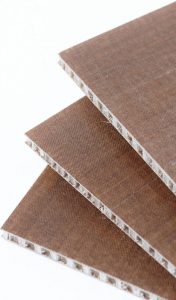
Demand And Meeting It
Barr believes there’s a movement afoot. There is a very large growing demand for linen and for the coproducts that may be produced at the mill including short fibers that can go into biocomposites, be ring spun similar to wool, or even be cottonized and blended with cotton. Everything produced at the mill will have a market.
European supply is not meeting with current market demands and so the Pennsylvania project could possibly fill in those gaps. According to a report by the Alliance for European Flax-Linen and Hemp, three quarters of the world’s flax fiber is produced in France, the Netherlands and Belgium — all small countries in terms of land. From 2010-2020 there’s been a 133-percent increase in flax production in Europe, but in 2023 poor weather conditions meant a smaller harvest. In the same report, the aver-age price in 2024 across all qualities and all production regions of European Flax fiber produced by European scutchers — in France, Belgium and the Netherlands — reached 9.08 euros per kilogram, representing a year-on-year increase of 55 percent.
Flax linen can be found in all three main areas of design: 60 percent by volume is used in fashion; 30 percent in lifestyle and interior decoration; and 10 percent in technical applications. Welsh said through her research she learned consumers are attracted to the sustainability of the fiber, but beyond fashion and apparel, other industries also are using flax fiber for applications such as biocomposites. “They’re using flax in airplanes, cars and boats,” Welsh said. “There’s a lot of potential for this fiber in other sectors too, and I think the demand in those sectors is going up. There are more industries interested in flax fiber to replace things like carbon fiberglass. It has a lot of characteristics that perform really well.” Welsh also cited the fishing industry, which is interested in using hemp and flax in order to move away from plastic-based nets and ropes.
Innovation And Applications
The Alliance for European Flax-Linen and Hemp reports the value chain has been enhanced by new textile production processes for knit-ting and innovative technical applications including linen knits, fiber brands, and techniques like washed linen and water-repellent linen.
“A lot of the European companies, like Safilin, are starting to come out with knit textiles made of linen,” Barr said. “No one has ever really done that before. We think of knits as being cotton or poly but it can be done. And there’s a lot of experimentation being done with the end-product. So, there is the environmental end, and then there’s the business end.”
The possibilities for flax and linen are just beginning.
Editor’s Note: Kathleen Webber is a freelance writer and academic who teaches journalism at The College of New Jersey. She researches and writes about sustainability in the global fashion industry, innovation in creating circular economies and domestic manufacturing.
2024 Quarterly Volume III




